Dosing
Flexible dosing to fit your patients’ needs1

Convert patients from IR CD/LD to CREXONT
4 dose strengths available with CREXONT® (carbidopa and levodopa) extended‑release capsules1*
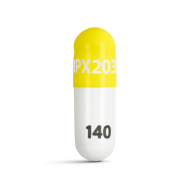
35 mg/140 mg carbidopa/levodopa
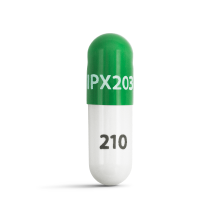
52.5 mg/210 mg carbidopa/levodopa
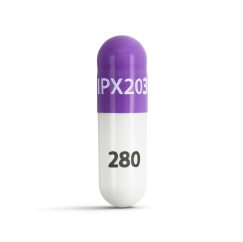
70 mg/280 mg carbidopa/levodopa
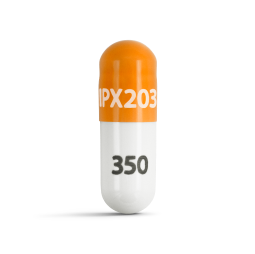
87.5 mg/350 mg carbidopa/levodopa
*Capsules shown are not actual size.
Establish starting dose and frequency of CREXONT1
IDENTIFY CURRENT DOSE OF IR LD
CONVERT TO DOSE
OF CREXONT
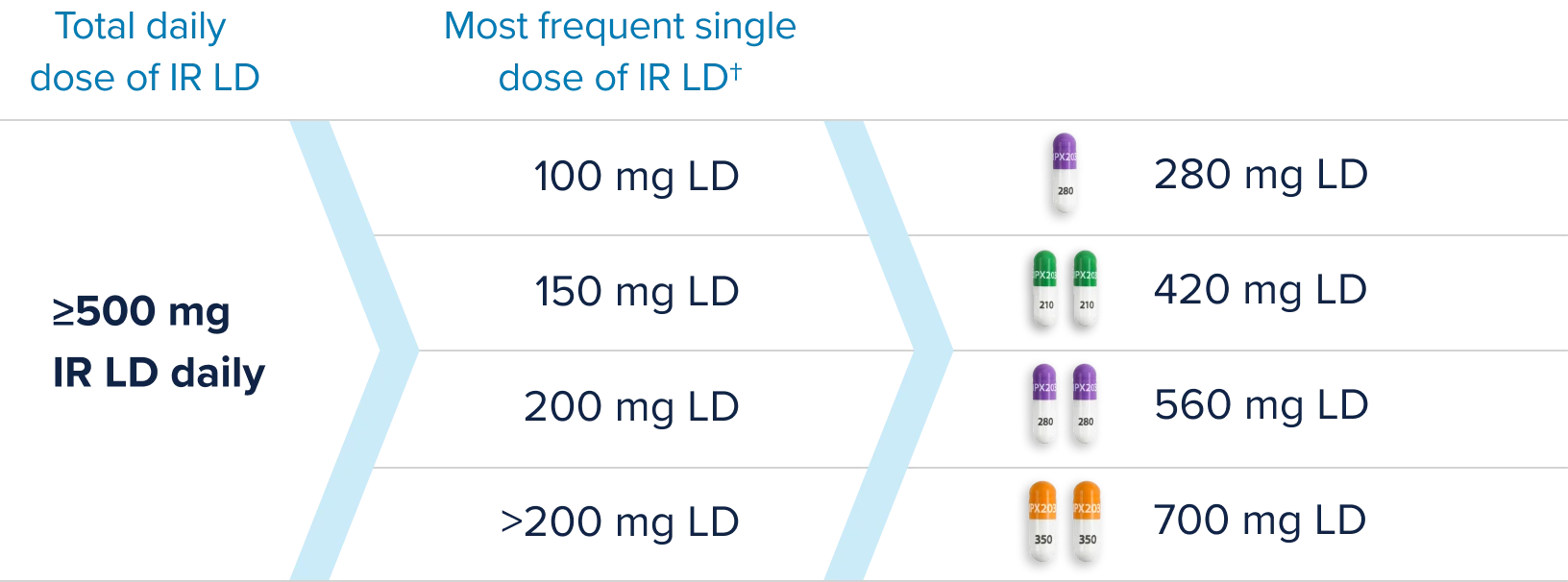

STARTING FREQUENCY OF CREXONT
3 times per day
Not all capsule strengths are shown. Capsules shown are not actual size.
For patients on a total daily dose of IR LD of <500 mg
IDENTIFY CURRENT DOSE OF IR LD
CONVERT TO DOSE
OF CREXONT

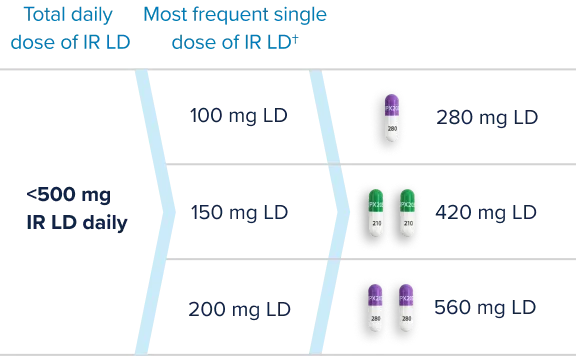
STARTING FREQUENCY OF CREXONT
2 times per day
Not all capsule strengths are shown. Capsules shown are not actual size.
Adjust as needed1
- Adjust dose or frequency after 1–3 days based on the patient’s clinical response and tolerability
- Dose may be increased gradually to a maximum daily dose of 525 mg/2100 mg CD/LD
- CREXONT may be taken up to 4 times per day
Dosing guidance for LD-naïve patients1
- Start dose at 35 mg/140 mg CD/LD 2 times per day for the first 3 days. Thereafter, the dosage may be increased gradually as needed. The maximum daily dosage is 525 mg carbidopa/2100 mg levodopa and can be divided up to 4 times per day
Additional dosing guidance1
- Initiate CREXONT on an approximately 1:1 mg basis using the LD component for conversion
- The initial total daily dose of LD in CREXONT may need to be increased if the COMT inhibitor is discontinued
†If 2 or more IR CD/LD doses correspond to the most frequently used single dose, select the highest of the IR CD/LD doses.1
‡Use of CREXONT in combination with other LD products has not been studied.1
General strategies for adjusting LD plasma levels in patients
If the patient:
- Experiences poor symptom control on a single dose, increase the dose1,2
- Experiences wearing “off” between doses, increase the dose frequency1,2
- Experiences dyskinesia, consider decreasing the dose1
CD/LD=carbidopa/levodopa; COMT=catechol-O-methyltransferase; IR=immediate-release; LD=levodopa.
Dosing tool
CD/LD=carbidopa/levodopa; IR=immediate-release.
Find out about savings programs for your patients
IMPORTANT SAFETY INFORMATION
Indications and Usage
CREXONT® (carbidopa and levodopa) extended-release capsules for oral use is indicated for the treatment of Parkinson’s disease, post-encephalitic parkinsonism, and parkinsonism that may follow carbon monoxide intoxication or manganese intoxication in adults.Dosage and Administration
- Levodopa-naïve patients: Starting dose is 35 mg carbidopa/140 mg levodopa taken orally twice daily for the first three days; thereafter, dosage may be increased gradually as needed
- For patients converting to CREXONT from immediate-release carbidopa/levodopa, dosages are not substitutable on a 1:1 basis. See full prescribing information Section 2.2 for instructions
- For patients converting from Rytary® (carbidopa and levodopa) extended-release capsules, initiate CREXONT on an approximately 1:1 mg basis using the levodopa component for conversion
- CREXONT may be taken up to four times daily. The maximum recommended daily dosage is 525 mg carbidopa/2100 mg levodopa
- CREXONT may be taken with or without food. Capsules should not be chewed, divided or crushed
- CREXONT should not be taken with alcohol
Contraindications
Nonselective MAO inhibitors.Warnings and Precautions
- CREXONT may cause falling asleep during activities of daily living, somnolence or dizziness. Patients should avoid activities that require alertness such as driving and operating machinery until they know how CREXONT affects them
- It is important to avoid sudden discontinuation or rapid dose reduction to reduce the risk of withdrawal symptoms such as high fever or confusion. Patients who are discontinuing CREXONT should taper off with healthcare provider guidance
- Consider dose reductions or stopping CREXONT in patients with hallucinations or impulse control disorders (e.g., gambling, sexual urges, or uncontrolled spending)
- Consider dose reduction in patients with dyskinesia
- Patients with a major psychotic disorder should not be treated with CREXONT
- Monitor patients with a history of cardiovascular disease for cardiac function
- Monitor patients with a history of peptic ulcer for upper GI hemorrhage
- Monitor patients with glaucoma for increased intraocular pressure
Adverse Reactions
The most common adverse reactions (incidence ≥ 3% and greater than immediate-release CD/LD) are nausea and anxiety.Drug Interactions
Iron salts and dopamine D2 antagonists, including metoclopramide, may reduce the effectiveness of CREXONT.Use in Specific Populations
Pregnancy: Based on animal data, CREXONT may cause fetal harm. There are no adequate data on the developmental risk associated with the use of CREXONT in pregnant women.Breastfeeding: The developmental and health benefits of breastfeeding should be considered along with the mother’s clinical need for CREXONT.
Geriatric patients: There were no differences in safety outcomes between patients less than 65 years of age, 65-75 years of age, or 75 years and older.
To report SUSPECTED ADVERSE REACTIONS, contact Amneal Specialty, a division of Amneal Pharmaceuticals, LLC at 1‑877‑835‑5472 or the FDA at 1‑800‑FDA‑1088 or www.fda.gov/medwatch.
Please see full Prescribing Information for CREXONT.
Content is for guidance only. Please use clinical judgment when prescribing CREXONT. Dosage is individualized for each patient.

